BLM Sand Mountain Land Exchange Update and Scoping Comments Apr 16
The proposed BLM land exchange would affect a large portion of our West Rim area trails and Warner Valley disbursed camping, so it is no surprise that it has generated a lot of interest. As with anything important, there have also been a lot of rumors that we’ve found not to be true, so this article should tell you the facts and where we’re at in the process. At the end of the article are UPLA’s Draft Comments.
Who is Involved in the Exchange? There are 4 parties directly involved in the Exchange.
- His Family Matters (HFM)-Representing Alan Carter who has 89 acres near Green Springs, which is a private in holding located in the Desert Tortoise Conservation Area. This land exchange was structured so that His Family Matters would only received cash in the transaction, and would not receive any of the exchanged land.
- Washington County Water Conservation District-(WCWCD) would be the recipient of the 1050 acres from the BLM, where they are proposing to build a 750 acre reservoir.
- Washington County is acting as the Facilitator of the transaction to coordinate between all the different parties. The County has also promised to make up any cash deficit needed to complete the exchange.
- Bureau of Land Management (BLM) would be exchanging the 89 acres for the 1050 acres based on appraisals.
Who is on the Steering Committee negotiating for OHV and Camping Interests? We formed a diverse group of OHV leaders to work on protecting our interests
- Loren Campbell, UPLA
- Jeff Bieber, DRATS
- Milt Thompson, Dixie 4 Wheel Drive
- Rich Klein, Trail Hero
- Ben Burr-BlueRibbon Coalition
- Casey Lofthouse, Casey’s Off Road
- Steve Jacobs, Tri State ATV
- Steve Maxfield, MX2
The Steering Committee began meeting in mid February to strategize and conduct phone, in person, online, and field trips with BLM, WCWCD, City of Washington, and City of Hurricane.
Key Objectives:
- Preserve Open OHV Access for all the land above the 2980’ elevation level on the Eastern side to the BLM border
- Maintain OHV access from the Washington Dam area to the trail system above, either via the current Ridgeline Trail or another trail that Washington County Water Conservancy would construct
- Prohibit Zoning and Building on top of the ridge, except for necessary infrastructure for the reservoir.
- Allow construction of a minimum 3 acre staging area in the Washington Dam Area, including installation of a restroom
- Maintain or relocate the current restroom on Pipeline Road
- Maintain access to the above facilities without any fees for use
- Disbursed camping in Warner Valley often attracts up to 300 campers that have enjoyed camping there for years without any charges. Develop a plan that would allow camping and Open OHV use to continue in the Valley until Dam construction begins, and when construction begins, offer alternatives for reasonable alternatives for campers displaced by the Land Exchange.
To date, we obtained verbal agreements that satisfy the first 6, we are still working on the disbursed camping. We also have some other items we will work on going forward such as the maintenance of the restrooms, and who will be the manager(s) for the new recreation areas. BLM has also agreed to incorporate any agreements we come to in the Alternatives if the Land Exchange proceeds. We also now have verbal consensus from both State Parks and the City of Washington that they agree with our objectives.
What we are trying to achieve? We are working to achieve an agreement that would have legal protections for the above items in perpetuity, and provide a unified approach to finding solutions. Although we have not directly encountered any Environmental Groups protest, we believe they will be forthcoming in the process at some point.
What lies ahead After the current scoping comment period ends on April 19, BLM will begin work on a Draft EA, which will also have a comment period. Followed by the Final EA document that will also have a comment period. It’s a long process, but we’ll stay engaged with you throughout to keep you updated and informed. Be sure to like us on social media and subscribe to our newsletters to be sure you get the information.
Now- Get your Comments Sent In By Wednesday April 19, here’s some more details on thought starters….
Email Comments to blm_ut_sgfo_comments@blm.gov with a copy to StopSandMtnSale@Gmail.com
UPLA Draft Scoping Comments Guide April 16, 2023
Utah Public Lands Alliance is a 501c3 organization whose mission is to protect access to public lands for all users. The proposed land exchange poses serious threats to many of our user groups, including OHV users of all types, campers, equestrian, and users that just want to play on the beautiful red rocks of Warner Valley. Utah has long been popular worldwide for OHV and other outdoor recreation opportunities. Moab has been said to be Mecca for as long as I’ve been off roading, but Sand Mountain has become the alternative of choice because of many factors. Sand Mountain is unique because of the Open OHV designation which allows development of trails to the already extensive trail network. This ability to add new trails has helped us to accommodate both the increased numbers of visitors, as well as the ever increasing abilities of vehicles and drivers. Combined with Washington County’s fantastic weather, supporting businesses, and OHV friendly local governments, and it is easy to understand why the Sand Mountain OHV area is now becoming the location of choice for not only users, but also a rapidly growing number of events that bring even more people and income to the local economy.
Not only do our users recreate on the land, but Utah Public Lands Alliance, as well as many other groups such as Desert Roads and Trails Society, Tri State ATV Club, and Ride Utah spend many, many weeks each year on the mountain to protect, preserve, and develop the resources of “our Mountain.” We accept and embrace our responsibility as practical environmentalists that believe in a reasonable balance between the protection of the natural environment and the human environment. Not only do we volunteer our time and efforts, we also bring money to complete projects. In the last year along, we have funded the addition of a new composting toilet on West Rim, as well as completing the 5 Acre Waddy’s Corral Staging Area. Our work is not done though, in the next year we are planning to pave the Water Tank Road from the highway along with the addition of another restroom at Waddy’s Corral. Next will be the creation of a new staging area at the Green Gate to get people quickly away from the interchange, and following that another staging area near the Hurricane Airport for that new area of trails.
The OHV sport has literally exploded in the last few years, and with rapid growth, there will come new challenges. I am proud to say that on Sand Mountain, we recognize issues often before BLM or Sand Mountain is aware, and use our skills as problem solvers to work with Land Managers to find a solution, find the funding when necessary, and mitigate the problem.
We are strong defenders of the use and trail system that will be affected by this proposed Exchange, and we appreciate the opportunity to offer our following comments with respect to the Land Exchange that will help you develop a more comprehensive Environmental Analysis leading to expanded pro recreation alternatives.
It’s important that UPLA does not oppose the exchange for the land to be used for a reservoir. We view the reservoir recreation opportunities as just another way to enjoy the area. We accept the loss of trails in Warner Valley that are necessary for the construction of a reservoir, but we want to clearly establish the following goals as follows:
- Preserve Open OHV Access for all the land above the 2980’ elevation level on the Eastern side to the BLM border
- Maintain OHV access from the Washington Dam area to the trail system above, either via the current Ridgeline Trail or another trail that Washington County Water Conservancy would construct
- Prohibit Zoning and Building on top of the ridge, except for necessary infrastructure for the reservoir.
- Allow construction of a minimum 3 acre staging area in the Washington Dam Area, including installation of a restroom
- Maintain or relocate the current restroom on Pipeline Road
- Maintain access to the above facilities without any fees for use
- Disbursed camping in Warner Valley often attracts up to 300 campers that have enjoyed camping there for years without any charges. Develop a plan that would allow camping and Open OHV use to continue in the Valley until Dam construction begins, and when construction begins, offer alternatives for reasonable alternatives for campers displaced by the Land Exchange.
Please also answer the following questions in your Environmental Analysis of the Land Exchange Proposal:
- Provide specific information about the proposed action, including its location, purpose and need, and potential environmental impacts.
- We understand the purpose of the reservoir use, but what is the purpose of the large acquisition east and north of the reservoir?
- We asked the Water Conservancy District and City of Washington what they plan to use the land for, and their response has been they have no plans or it’s too early to have thought about it. BLM should demand a clear direction from WCWCD and the City of Washington as to their involvement and precise plans for the future, including alternatives if the reservoir is built or not built.
- My understanding is that the exchange has only the purpose of providing for the acquisition of the designated critical habitat for the Mojave desert tortoise. Although there has been much talk about the reservoir, it is my understanding that the proposal for the reservoir is only speculative, and it is not even mentioned in your public scoping notice. It is also my understanding that the BLM has determined in their EA that all 1047 acres of BLM land proposed for the exchange is also suitable for the desert tortoise population. Simple math would indicate that giving up 1047 acres of land proposed to be speculatively used for a reservoir in exchange for 89 acres would result in a net loss of 960 acres of tortoise habitat, which might actually hurt the desert tortoise population. This might be a simplistic view, explain the science behind this exchange on how much the net effect of this exchange will be on the desert tortoise population.
- How specifically will it affect visitors and their economic impact to the region?
- Adjoining lands that are managed by different agencies often cause conflicts because of differences in rules governing that use, and law enforcement.
- Dr. Mark Rappaport at the University of Utah reported in 2021 that Utah now has the highest rate of mental health disorders (26.86% or 599,000 of adults) of any other state, as well as Lifetime Depression of 23.1% versus 18.8% for the United States. Not only adults are affected, suicides by youth 10-24 is the leading cause of death in Utah, and for ages 25-44 it is the second leading cause of death. Outdoor recreation has been cited as one of the best environmental solutions to stress and mental health. One of the basics in OHV is learning how to share our trails and resources responsibly, an important lesson for everyone when so much effort is expended on efforts to divide us from each other. What studies have you done on the impact that restriction of use of the land, especially if the reservoir is not built, would have on reduced opportunities for recreation, the quality of life, and the human environment?
- Much of the increase in OHV recreation has come from UTV/ATV users that need staging areas to unload and park their machines. Where do they go if Washington Dam is closed? What will you need to do to prevent users from parking in unsafe or unauthorized areas? What law enforcement agency will be responsible for this?
- The area between Pipeline Road and West Rim is becoming increasingly popular with dirt bike users. What will be the impact on them if this is eliminated?
- What will be the Visual Resource Impacts of the exchange. Currently, most of Sand Mountain is classified as Class 2, but it appears from Map 2.14 in the BLM St George Field Office 1999 Recreation Management Plan that the West Rim is classified as Class 3. How will you ensure that the basic characteristics and visual appearance will be maintained if the exchange is approved?
- Describe what the impacts and visual resources will be if the Land Exchange is approved and:
- The Dam and Reservoir are built
- If the Dam and Reservoir are not built
What provisions can BLM build into the Exchange Agreement that acceptable uses of the exchanged lands will be as indicated?
-
- In the Agreement to Initiate a Land Exchange, BLM agreed not to encumber the land without first notifying WCWCD and giving them an opportunity to comment. This will affect all future the consent of WCWCD. This affects all Special Recreation Permits to limit their term from the standard 10 year period to only 2 years. This further burdens the applicants and the BLM in the processing and review of new permits. What steps can BLM take to ensure this burden is not passed on to Applicants in extra paperwork, expense, and potential delays?
- Identify any alternatives that the BLM should consider, including no action, and explain why they would be preferable or less impactful.
- What other locations have been considered for the exchange located north and east of the reservoir? Explain why you came to the conclusion that this is the best of those alternatives.
- I have been told the reason for the expansion of 169 acres to the original proposed exchange was because a survey had already been done. How much would it actually cost to survey a better defined area?
- There is another section of BLM land between the Southern border of the Proposed Exchange and Foremaster Holdings Private Property. This approximately 90 acres of land would be better suited for the exchange than the Northeast corner, and it would also be a better solution for recreation development on the southern edge of the proposed reservoir. It would also provide easier access to this area from Warner Valley Road, right off Highway 7. Have you considered replacing our area of concern with land to the south of the proposed reservoir location, where WCWCD is considering for recreation already.
- I understand that the exchange must be based on value for value appraisals, and that the Private Parcel must be valued as if it was not encumbered by the Desert Tortoise Habitat restriction. Generally, when property is being valued, it is valued several ways, such as “As Is”, “Highest and Best Use”, and “For Intended Purpose” Please explain what criteria will be used for valuing the 1047 acres of land, and without a clear intended purpose of the land from WCWCD, please explain how you arrive at appraisal values.
- What alternatives have been considered that eliminate portions of the 1047 acres?.
- What other alternatives have you considered for acquiring the 89 acre Non Federal parcel?. Did you apply for a grant from the Land and Water Conservation Fund? What were the results of that application?
- If no action is recommended as an alternative, please provide precise details what that means.
- Highlight any potential significant impacts that may result from the proposed action and suggest ways to mitigate or avoid them.
- Without knowing what the new use will be, how will you clearly analyze potential impacts or mitigations.
- How do you propose to resolve impacts such as user conflicts between OHV and development, noise or traffic concerns.
- Although WCWCD does not want to manage the area for recreation, they indicated that their intent is that recreation would be allowed and managed by another agency. What types of commitments would bind these other managers to abide by the terms of any agreement with the OHV/Disbursed camping communities?
- Although a State Park, California’s Oceano Dunes OHV users have been attacked by new residents building communities adjacent to the Dunes because of User Conflicts. What consideration have you given that the transfer could lead to even further losses if undetermined future users complain about current OHV use such as noise, traffic, or blowing sand.
- Open OHV areas like Sand Hollow are rare. OHV use has been increasing dramatically, yet trail closures are also increasing. This is leading us to a serious future conflict. Please provide your analysis of the land currently available, what it was 5 years ago, and any projections in the next 5 years in Utah for each of the following designations:
- Open OHV use
- Open for Use on Existing Roads and Trails
- Open for Use on Designated Roads and Trails
- Closed to OHV Use
- Change in OHV Registration Data Over the same period
- Provide relevant scientific data, studies, or other sources of information to support the comments.
- Any reduction in Warner Valley that is currently used for disbursed camping will be both a huge loss and a problem that needs to be solved. On busy weekends, over 300 rigs are camped throughout Warner Valley, with most near the Highway, but many going down the valley for more secluded camping. The Dyrt published their 2022 Camping Report, which revealed several important facts:
- 1 in 5 Americans went camping in 2021
- First time campers are increasing more diverse, with over 40% of first time campers self identifying as Black, Indigenous, and People of Color-that is up from on 23.8% in 2018.
- It was 3x harder to book a campground in 2021 than pre-pandemic, with campers in the West finding the highest percentage (48%) of fully booked campgrounds than any other region in the West.
- People that sought disbursed camping doubled in 2021 versus 2020. OHV users overwhelmingly want disbursed camping for ease of access with trailers, ability to camp surrounded by friends, being more isolated, and lower costs, especially for longer trips.
- Any reduction in Warner Valley that is currently used for disbursed camping will be both a huge loss and a problem that needs to be solved. On busy weekends, over 300 rigs are camped throughout Warner Valley, with most near the Highway, but many going down the valley for more secluded camping. The Dyrt published their 2022 Camping Report, which revealed several important facts:
Please identify alternatives, both short and long term, for how you will accommodate any potential loss in disbursed camping.
- If the “disbursed” camping is eliminated at Washington Dam, law enforcement issues may rise with those people desiring free camping will arise in other areas, i.e. our Waddy’s Corral staging area may have people trying to camp there, especially after we pave the road to it. Last weekend there were probably 250-300 people camping in the valley. Hurricane Area RV parks are expensive, starting around $75 and going up to $158 per night for the new Jellystone Park. Sand Hollow State Park RV camping is often full. Most commercial campgrounds have limited hours for check in and checkout, eliminating that day for use if they must check out in the morning and cannot check in until the afternoon, this particularly causes difficulty for weekend users, who will lose 1/3 of their weekend because of check in/check out times, or park their RV’s somewhere unauthorized leading to more problems. Another reason that people often prefer disbursed camping is they want more space, not being to restricted to only being 15’ from the next rig and only having the side of their rig as a view. During the pandemic, users flocked to disbursed camping to gain social distancing. Where are the people that have enjoyed free camping for many years in Warner Valley going to go, or will they be unable to continue the recreation they have enjoyed? This seems that it may severely impact low income communities. Provide your analysis of this problem, and the mitigations to solve it.
-
- Oceano Dunes is a great example of how user conflicts were created that led to further losses to OHV. In many communities, airports have come under attack from new communities built around them that complain about the noise, ultimately resulting in the closure of 378 airports since 1990, almost 7% of the total. Explain what measures you are taking to ensure that OHV does not suffer a similar fate.
- Explain how you quantify the value of land used for recreation, including significant factors that influence that valuation?
- One of the strong mental health benefits that people get from OHV use is good balance; challenge vs comfort and self control. A Berkeley study published an interesting article on how varying levels of control were often the best balance for happiness. Fear and uncertainty are also both some of the strongest motivators of human behavior. How will the various options being considered affect people’s happiness?
- OHV Users enjoy all of the following rewards:
- Opportunity for a recreational experience for all types of people.
- Opportunity to strengthen family relationships.
- Opportunity to experience and respect the natural environment.
- Opportunity to participate in a healthy and enjoyable sport.
- Opportunity for relief from the pandemic.
- Opportunity to experience a variety of opportunities and challenges.
- Camaraderie and exchange of experiences.
- We like to build and maintain trails for use by everyone.
- We enjoy observing flora, fauna, and landscapes.
- For the adventure and “flow” of it.
The agency’s evaluation of the human environment should include the significant value of flow that is provided by motorized recreation. OHV riding is our time to relax and find the “flow”. “Flow is a state of mind in which a person becomes fully immersed in an activity. Positive psychologist Mihály Csíkszentmihályi describes flow as a state of complete immersion in an activity. Being immersed can be defined as a state of focus in which a person is completely absorbed and engrossed in their work.” It often occurs when you are doing something that you enjoy and in which you are quite skilled. “This state is often associated with the creative arts such as painting, drawing, or writing. However, it can also occur while engaging in a sport, such as skiing, tennis, soccer, dancing, or running.” OHV riding that provides a balance of skill versus challenge allows one to get so focused that time stops and anxieties, worries, apathy, and boredom disappear. https://www.verywellmind.com/what-is-flow-2794768 https://youtu.be/8h6IMYRoCZw https://youtu.be/fXIeFJCqsPs Please explain how your actions will contribute to improving “flow”
- Address the scope of the proposed action, including any indirect or cumulative effects that may result from the action.
- How will continued access to the public lands on top of Warner Ridge and West Rim be accomplished?
- What will be the impact of the loss of staging and dry camping in the area?
- What will be the impact on the remote disbursed camping sites on Pipeline Road? What alternatives have you considered?
- What will be the impact on OHV traffic patterns from the recently constructed Waddy’s Corral Staging area and other Sand Mountain trails?
- Why are you giving more land than needed for the reservoir? What is the cost of having the land resurveyed to accommodate a smaller footprint of the exchange?
- Where will the people that use the disbursed camping sites on Pipeline Road go?
- Where will the campers using Washington Dam free camping area go?
- There are often many conflicts when different land managers are in charge of adjacent areas, who is going to manage the acquired land, and what is their experience working in conjunction with BLM as the adjacent land manager?
- How will the view sheds from the West Rim trail and above be impacted by the change?
- The OHV Area loss from this is 1050 acres, plus an additional loss of almost 400 acres if the reservoir project proceeds in a future request. This is in addition to the indirect and direct cumulative effects from various options from the 2016 Lake Powell Project proposal, ranging from 60 to 290 additional acres of land being closed to OHV use. This brings the total OHV loss to 1740 acres from the Sand Mountain SMRA. What other options have you considered?
- Identify any potential environmental justice concerns that may arise from the proposed action, such as impacts on low-income or minority communities.
- Explain your scientific analysis of the impact of potentially losing the free and disbursed camping affect users of lower income?
- Discuss any potential cultural or historical impacts on Native American tribes or other affected communities.
- I recently learned that there were archaeological/cultural finds in Warner Valley that may have been damaged. These sites have never been published as far as I know. What studies have you conducted that show comparisons in keeping sites “secret” versus publishing locations and encouraging conservation measures? What cultural, anthropological, and historical impacts will result from this Proposed Exchange, and how will they be mitigated?
- Offer specific suggestions for how the BLM can address public concerns and incorporate feedback into the decision-making process.
- Visitors to the area come at all different times of the year, and from very wide geographic areas. When the next phase of comments is released, please consider a longer comment period to allow OHV and camping groups to reach more individuals that will have an interest.
 Scoping is underway for the proposed Land Exchange for the Washington County Water Conservancy District to obtain 1050 acres of land from the Western portion of Sand Mountain OHV area near Warner Valley. Part of this may be to provide land for the new reservoir, to which we have no objection, but we are in opposition to the addition of the land east of Warner Valley Rim which would affect West Rim and Ridgeline Trails. You can learn more about the latest details at
Scoping is underway for the proposed Land Exchange for the Washington County Water Conservancy District to obtain 1050 acres of land from the Western portion of Sand Mountain OHV area near Warner Valley. Part of this may be to provide land for the new reservoir, to which we have no objection, but we are in opposition to the addition of the land east of Warner Valley Rim which would affect West Rim and Ridgeline Trails. You can learn more about the latest details at 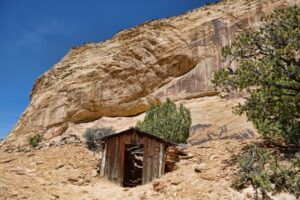
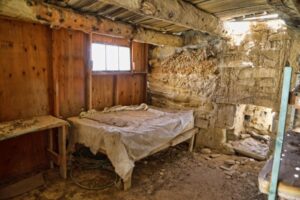
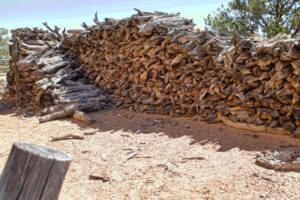
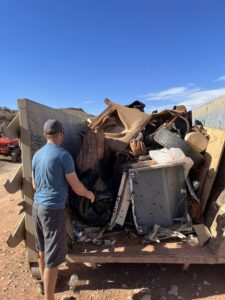
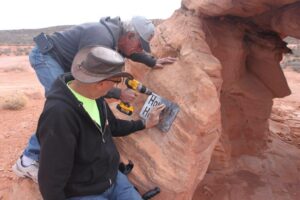
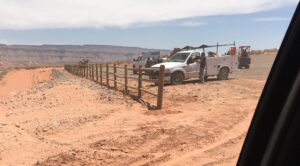 together, along with our partners, the Bureau of Land Management is the way we will win the fight to keep our public lands accessible.
together, along with our partners, the Bureau of Land Management is the way we will win the fight to keep our public lands accessible.